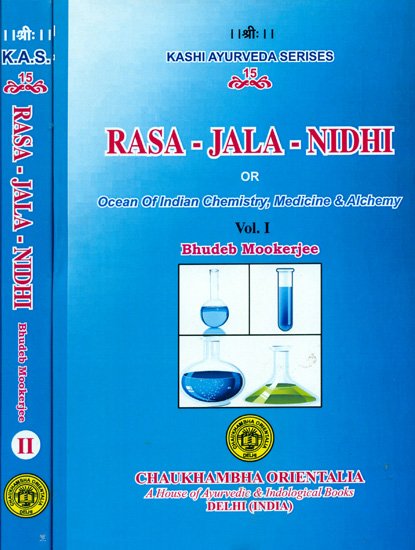Rasa Jala Nidhi, vol 2: Minerals (uparasa)
by Bhudeb Mookerjee | 1938 | 28,803 words | ISBN-10: 8170305829 | ISBN-13: 9788170305828
This second volume of the Rasa-jala-nidhi deals with the purification, incineration and medicinal uses of various minerals (uparasa), as well as preventing faults due to misuse. It is continued in the third volume which deals with the various metals. The Rasa-jala-nidhi (“the ocean of Iatrochemistry, or, chemical medicine) is a compendium of Sansk...
Part 1 - Characteristics of Mica (abhra or abhraka)
Mica is a great increaser of vitality. It removes from the system an abnormal excess of vayu (air) and pitta (animal heat), and does away with waste. It increases retentive faculties, cures diseases, and increases longevity, energy and strength. It soothes the system, increases appetite, removes phlegm, increases the power of digestion of food, and produces a cooling effect. It cures all sorts of diseases, if administered with suitable anupana (accompaniment). It helps the solidification of mercury.
Different kinds of Mica,
The attributes mentioned above are possessed by that mica only which is procured from a mine, having a depth of twelve feet, at least. Mica, procured otherwise, has got no substance, and is therefore useless. There are four kinds of mica, viz. (i) Pinaka, (2) Naga, (3) Mandukara and (4) Bajra. Each of these is again subdivided into four different classes, according to their colour (viz. white, red, yellow, and black). If subjected to heat, Pinaka splits itself into pieces, so that its layers are separated from one another. If taken internally, it causes death by an incurable constipation. If subjected to heat, Naga emits a hissing sound like that of a snake. Taken internally, it gives rise to a kind of leprosy, called mandala. If subjected to heat, Manduka leaps up like a frog. Taken internally, it gives rise to stone disease, incurable, except by surgical operations. If subjected to heat, Bajra is freed from all sorts of impurities, and cures all sorts of diseases and strengthens the body, if taken internally, in the prescribed manner.
Mica, again, is of four different kinds, viz, white, red, yellow, and black, White mica is used in processes imparting a white colour to a substance (e. g. in transformation of lead into silver). Red mica is used in imparting a red colour to a metal, Yellow mica is used in processes imparting a, yellow colour to a substance, as for example, in the transformation of base metals into gold.
Although these four different kinds of bajra-mica have been recommended for use in medicines, the black bajra mica is infinitely superior to the other three kinds in efficacy. Only that kind of mica is to be made use of in medicines which is soft, full of layers, coloured, heavy, and is easily capable of being split up Into Its constituent layers.
Conclusion:
 This concludes ‘Characteristics of Mica (abhra or abhraka)’ included in Bhudeb Mookerjee Rasa Jala Nidhi, vol 2: Initiation, Mercury and Laboratory. The text includes treatments, recipes and remedies and is categorised as Rasa Shastra: an important branch of Ayurveda that specialises in medicinal/ herbal chemistry, alchemy and mineralogy, for the purpose of prolonging and preserving life.
This concludes ‘Characteristics of Mica (abhra or abhraka)’ included in Bhudeb Mookerjee Rasa Jala Nidhi, vol 2: Initiation, Mercury and Laboratory. The text includes treatments, recipes and remedies and is categorised as Rasa Shastra: an important branch of Ayurveda that specialises in medicinal/ herbal chemistry, alchemy and mineralogy, for the purpose of prolonging and preserving life.
